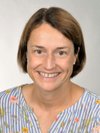The DFG graduate school “IRTG-StRATEGy” comprises a set of projects that aim to study the coupling between tectonics, climate, erosion, sedimentation and hydrocarbon potential in the central Andes and their foreland basins. Funded by the DFG, the German-Argentinian graduate school is a cooperation between the University of Potsdam and the GFZ Potsdam, together with CONICET and several Argentinian universities. During the first phase of the project from 2015 to 2018, 12 PhD students in each country will study the Andean geology within one of four Working Packages (WP):
- WP1: Climate-tectonic impacts on surface processes
- WP2: Interplay between tectonics and inherited crustal inhomogeneities
- WP3: Basin modelling and georesource formation
- WP4: Metallogenesis of metal deposits in felsic magmas
As a part of WP3, we aimed at exploring the present-day compositional, thermal and rheological configuration of the Central Andes and their adjacent forelands (21°-39°S) on a lithospheric scale. Therefore, we use data-driven 3D numerical models to understand how lithospheric structure controls the deformational behaviour. The general workflow involves data-constrained structural- and density-modelling in order to obtain models of the 3D distribution of physical properties for the Central Andes. These models were then used to predict the steady-state thermal field, which are further applied to assess the present-day rheological state in the study area.
Project Phase G.3.3-I
In the first project phase of StRATEGy, our work focussed on the 3D lithosphere-scale density and thermal structure of the intracontinental Chaco-Paraná basin system in the northern Central Andes. The main results are summarized in the PhD thesis of Christian Meeßen carried out under the supervision of Magdalena Scheck-Wenderoth and Manfred Strecker and in close collaboration with Judith Bott and our Argentine partners. The main outcomes of this project are found in Meeßen et al. (2018) and Meeßen (2019):
- To the north (21°S-26°S), the lithosphere of the thin-skinned foreland region of the Subandean ranges is characterised by a relatively strong crust and a weak mantle. Contrarily, the adjacent foreland basin consists of a fully coupled, very strong lithosphere. Thus, shortening in northern Argentina can only be accommodated within the weak lithosphere of the orogen and the Subandean ranges.
- To the south (26°S-34°S), in contrast to the northern foreland, the lithosphere of the thick-skinned Sierras Pampeanas is fully coupled and characterised by a strong crust and mantle. The high overall strength prevents the generation of crustal-scale faults by tectonic stresses. Due to thermal weakening, and potentially lubrication of the inherited discontinuities, the lithosphere is locally weakened such that tectonic stresses can uplift the basement blocks.
Meeßen, C. (2019): The thermal and rheological state of the Northern Argentinian foreland basins, PhD Thesis, Potsdam : Universität Potsdam, 151 p.
https://doi.org/10.25932/publishup-43994
Project Phase G.3.3-II
The second project phase of the WP3 took a closer look on the lithospheric-scale 3D configuration of the southern Central Andes and adjacent forelands (29°S-39°S). It was part of the PhD project of Constanza Rodriguez Piceda, under the supervision of Magdalena Scheck-Wenderoth and Manfred Strecker and in close collaboration with Judith Bott, Maria Laura Gomez-Dacal and Claudia Prezzi. A first-order characteristic of this area is that the subduction angle changes at latitudes 33°S-35°S from flat in the North to normal in the South. The aim of the project was to study the relationship between the characteristics of the overriding plate and the crustal deformation and dynamics of the subduction system. The outcomes of this second phase can be summarized as follows (Rodriguez Piceda et al. 2021; Rodriguez Piceda et al.,2022a-b, under review):
- There is a clear segmentation between the forearc, the orogen (i.e. main orogenic wedge and arc) and the foreland in terms of crustal thickness, density distribution and thermomechanical state.
- The lithosphere of the orogen is thicker, lighter, warmer a mechanically weaker than the remaining regions of the orogenic system.
- The forearc lithosphere appears denser, thinner, colder and mechanically stronger than the adjacent orogen. Therefore, it acts as a rigid indenter that can facilitate the propagation of the deformation into the orogenic interior.
- The foreland lithosphere is overall denser, thinner, colder a mechanically stronger than the adjacent orogen. Several lithospheric domains can be recognized from north to south in terms of variations of crustal density, thickness and temperature. The lithospheric configuration of the northern foreland (29°S-33°S; thick, dense, cold and potentially strong lithosphere) may enhance the coupling between the subducting and overriding plates and therefore could contribute to the establishment of a flat subduction setting
- There is a strong spatial relationship between upper-plate seismicity distribution and strength. The brittle-ductile transition effectively bounds the depth extent of the seismogenic zone. Seismicity localizes at the boundary between strong and weak domains
- Seismicity within the lower plate is likely triggered by deshydration reactions within the oceanic crust and mantle.
However, seismic occurrence within the flat segment appears to be related to enhanced flexural stresses due to the changing slab dip geometry.
Rodriguez Piceda, C. (2022): Thermomechanical state of the southern Central Andes, PhD Thesis, Potsdam : Universität Potsdam, xx, 228 p.
https://doi.org/10.25932/publishup-54927
More information about IRT-StRATEGy (www.irtg-strategy.de)
Supported by:
DFG - Deutsche Forschungsgemeinschaft
CONICET Argentinien
Status:
running
Publications:
Rodriguez Piceda, C., Cacace, M., Bott [Sippel], J., Scheck-Wenderoth, M., Strecker, M. (2022): Long-Term Lithospheric Strength and Upper-Plate Seismicity in the Southern Central Andes, 29°–39°S. - Geochemistry Geophysics Geosystems (G3), 23, 3, e2021GC010171. https://doi.org/10.1029/2021GC010171
Rodriguez Piceda, C., Scheck-Wenderoth, M., Bott [Sippel], J., Gomez Dacal, M. L., Cacace, M., Pons, M., Prezzi, C. B., Strecker, M. R. (2022): Controls of the Lithospheric Thermal Field of an Ocean-Continent Subduction Zone: The Southern Central Andes. - Lithosphere, 2022, 1, 2237272. https://doi.org/10.2113/2022/2237272
Barrionuevo, M., Liu, S., Mescua, J., Yagupsky, D., Quinteros, J., Giambiagi, L., Sobolev, S. V., Rodriguez Piceda, C., Strecker, M. R. (2021): The influence of variations in crustal composition and lithospheric strength on the evolution of deformation processes in the southern Central Andes: insights from geodynamic models. - International Journal of Earth Sciences, 110, 2361-2384. https://doi.org/10.1007/s00531-021-01982-5
Ibarra, F., Prezzi, C. B., Bott [Sippel], J., Scheck-Wenderoth, M., Strecker, M. R. (2021): Distribution of temperature and strength in the Central Andean lithosphere and its relationship to seismicity and active deformation. - Journal of Geophysical Research: Solid Earth, 126, 5, e2020JB021231. https://doi.org/10.1029/2020JB021231
Ibarra, F., Liu, S., Meeßen, C., Prezzi, C. B., Bott [Sippel], J., Scheck-Wenderoth, M., Sobolev, S. V., Strecker, M. R. (2019): 3D data-derived lithospheric structure of the Central Andes and its implications for deformation: Insights from gravity and geodynamic modelling. - Tectonophysics, 766, 453-468. https://doi.org/10.1016/j.tecto.2019.06.025
Lucero, S. E. V., Ibarra, F., Gomez Dacal, M. L., Prezzi, C., Bott [Sippel], J., Scheck-Wenderoth, M., Vizán, H. (2022): 3D thermal and rheological models of the southern Río de la Plata Craton (Argentina): implications for the initial stage of the Colorado rifting and the evolution of Sierras Australes. - International Journal of Earth Sciences, 111, 1519-1538. https://doi.org/10.1007/s00531-022-02197-y
Vazquez Lucero, S. E., Prezzi, C., Scheck-Wenderoth, M., Bott [Sippel], J., Gomez Dacal, M. L., Balestrini, F. I., Vizán, H. (2021): 3D gravity modelling of Colorado and Claromecó basins: new evidences for the evolution of the southwestern margin of Gondwana. - International Journal of Earth Sciences, 110, 2295-2313. https://doi.org/10.1007/s00531-020-01944-3
Gomez Dacal, M. L., Scheck-Wenderoth, M., Aragón, E., Bott [Sippel], J., Cacace, M., Tocho, C. (2021): Unraveling the lithospheric-scale thermal field of the North Patagonian Massif Plateau (Argentina) and its relations to the topographic evolution of the area. - International Journal of Earth Sciences, 110, 2315-2331. https://doi.org/10.1007/s00531-020-01953-2
Data
Rodriguez Piceda, C., Scheck-Wenderoth, M., Bott [Sippel], J., Gomez Dacal, M. L., Pons, M., Prezzi, C., Strecker, M. (2021): 3D rheological model of the Southern Central Andes.
https://doi.org/10.5880/GFZ.4.5.2021.001
Rodriguez Piceda, C., Scheck-Wenderoth, M., Cacace, M., Bott [Sippel], J., Strecker, M. (2021): 3D rheological model of the Southern Central Andes.
https://doi.org/10.5880/GFZ.4.5.2021.002
Gomez Dacal, M. L., Tocho, C., Aragón, E., Bott [Sippel], J., Scheck-Wenderoth, M. (2020): North Patagonian Massif, Argentina: Lithospheric 3D gravity modelling using upper-mantle density constraints. https://doi.org/10.5880/GFZ.4.5.2020.002
Rodriguez Piceda, C., Scheck-Wenderoth, M., Gomez Dacal, M. L., Bott [Sippel], J., Prezzi, C., Strecker, M. (2020): Lithospheric-scale 3D model of the Southern Central Andes. https://doi.org/10.5880/GFZ.4.5.2020.001
Meeßen C, Bott [Sippel] J, Scheck-Wenderoth M, et al (2018) Crustal Structure of the Andean Foreland in Northern Argentina: Results From Data-Integrative Three-Dimensional Density Modeling. J Geophys Res Solid Earth 123:1875–1903. https://doi.org/10.1002/2017JB014296
Meeßen, C. (2019) The thermal and rheological state of the Northern Argentinian foreland basins, PhD Thesis, Potsdam : Universität Potsdam, 151 p. https://doi.org/10.25932/publishup-43994
Rodriguez Piceda, C, Scheck-Wenderoth M, Gómez Dacal ML., Bott, J, Prezzi C, and Strecker M (2020) Lithospheric density structure of the Southern Central Andes and their forelands constrained by 3D gravity modelling, EGU General Assembly 2020, Online, EGU2020-3313, https://doi.org/10.5194/egusphere-egu2020-3313, 2020
Software
Meeßen, C.(2019): pyGMS: lithosphere-scale rheological analyses of GMS models in Python, Zenodo. https://doi.org/10.5281/zenodo.3338065
Meeßen, C.(2019): VelocityConversion, Zenodo. https://doi.org/10.5281/zenodo.3338156
Meeßen, C. (2018): VeloDT: Fast Conversion of Upper Mantle Seismic Velocities to Density and Temperature (Version v1.0). https://doi.org/10.5281/zenodo.1172629
Dissertation
Rodriguez Piceda, C. (2022): Thermomechanical state of the southern Central Andes, PhD Thesis, Potsdam : Universität Potsdam, xx, 228 p.
https://doi.org/10.25932/publishup-54927
Meeßen, C. (2019): The thermal and rheological state of the Northern Argentinian foreland basins, PhD Thesis, Potsdam : Universität Potsdam, 151 p.
https://doi.org/10.25932/publishup-43994





